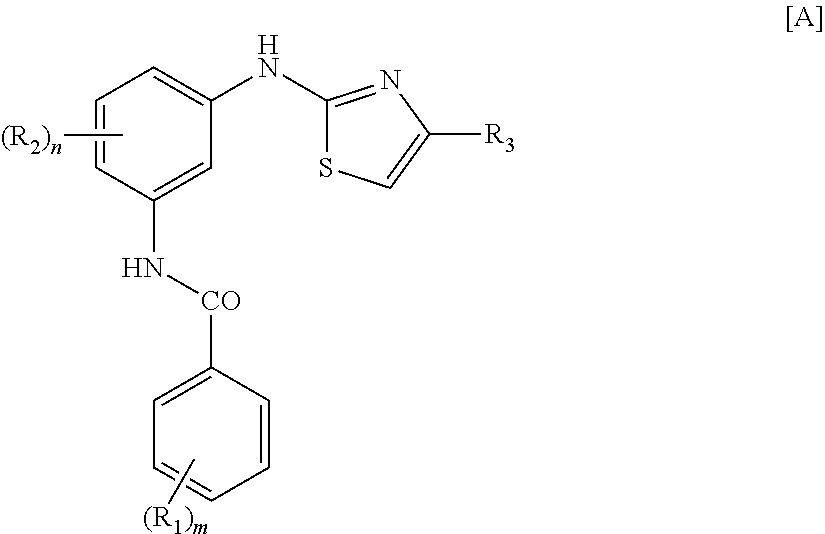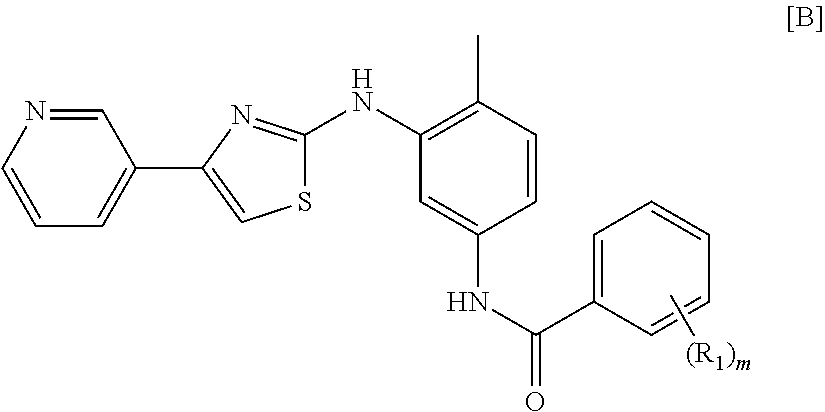Use of masitinib for the treatment of progressive supranuclear palsy
a supranuclear palsy and masitinib technology, applied in the direction of pharmaceutical active ingredients, organic active ingredients, pharmaceutical delivery mechanisms, etc., can solve the problems of complex eye movement and thinking problems, severe and progressive problems with gait and balance control, loss of balance, etc., to reduce bbb permeability and strengthen its integrity.
- Summary
- Abstract
- Description
- Claims
- Application Information
AI Technical Summary
Benefits of technology
Problems solved by technology
Method used
Image
Examples
example 1
Effect of Masitinib on Mouse Model of Neurodegenerative Tauopathy
[0112]Preclinical data from a mouse model of relevance to PSP-like diseases provided proof-of-concept for masitinib's neuroprotective effect in PSP and also supported initiation of a randomized controlled phase 2b / 3 human trial. Masitinib's neuroprotective effect in PSP was investigated using the MPTP (1-methyl-4-phenyl-1,2,3,6-tetrahydropyridine) mouse model. This in vivo model is of relevance to PSP-like diseases (i.e. neurodegenerative tauopathies) and importantly it is capable of demonstrating the mechanism of action under investigation, i.e. inhibition of neuroinflammatory response in a neurodegenerative tauopathy. MPTP is a toxin that produces the same marked depletion of striatal dopamine and destruction of dopaminergic neurons in the substantia nigra as is observed in PSP [Oh M, et al. J Nucl Med. 2012 March; 53(3):399-406. Oh, 2012]; [Hardman C D, et al. Exp Neurol. 1997 March; 144(1):183-92].
[0113]The implica...
example 2
Clinical Study Protocol
[0163]Study design: Randomized, placebo-controlled, phase 2b / 3 study to compare the efficacy and safety of masitinib versus placebo in the treatment of patients suffering from Progressive Supranuclear Palsy (PSP).
[0164]Diagnosis: Patients with probable or possible PSP.
[0165]Study treatment: Masitinib 100 and 200 mg tablets.
[0166]Associated product: Placebo, matching 100 mg and 200 mg tablets.
[0167]Duration of treatment: 48 weeks of study treatment with possible extension.
[0168]Main Inclusion Criteria:[0169]Female or male patient aged between 40 and 80 years old, weighing more than 41 kg and with a Body Mass Index (BMI) between 18 and 35 kg / m2.[0170]Probable PSP (clinical signs of PSP) with PSP stage≦II defined as:[0171]at least a 12-month history of postural instability or falls during the first 3 years that symptoms are present; and[0172]PSPRS score [0173]an akinetic-rigid syndrome with prominent axial rigidity.[0174]MAPT H1 positive haplotype.[0175]Modified ...
PUM
| Property | Measurement | Unit |
|---|---|---|
| stiffness | aaaaa | aaaaa |
| axial rigidity | aaaaa | aaaaa |
Abstract
Description
Claims
Application Information
 Login to View More
Login to View More - R&D
- Intellectual Property
- Life Sciences
- Materials
- Tech Scout
- Unparalleled Data Quality
- Higher Quality Content
- 60% Fewer Hallucinations
Browse by: Latest US Patents, China's latest patents, Technical Efficacy Thesaurus, Application Domain, Technology Topic, Popular Technical Reports.
© 2025 PatSnap. All rights reserved.Legal|Privacy policy|Modern Slavery Act Transparency Statement|Sitemap|About US| Contact US: help@patsnap.com



